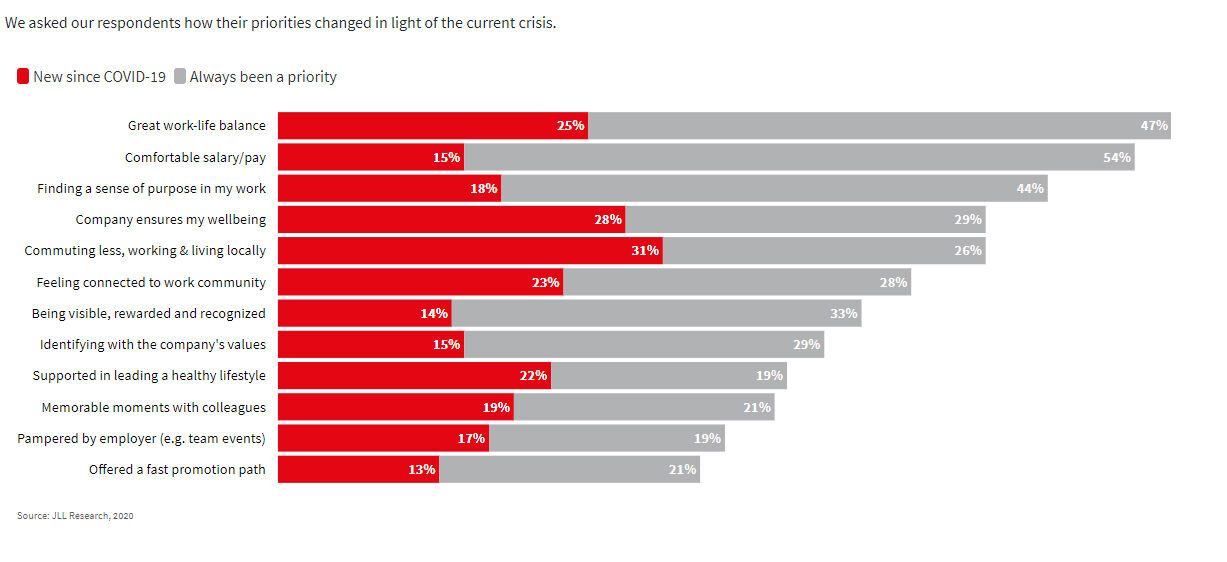
Millions of Americans have adapted to working from home, but when the pandemic passes and it is safe to return to the office, many do want to go back. Just not every day.
A recent Jones Lang LaSalle survey of office workers currently working from home found 72% want to continue working from home post-crisis, but the majority of those want to do so an average of two days a week. Half prefer some similar mix of a hybrid approach of some work at home and some in the office.
Interestingly, the youngest workers — those often considered most comfortable adapting to new technologies — are among those most anxious to have the office option back, particularly those stuck in cramped apartments or living with their parents.
“We have the largest population of adults living with their parents under the age of 30 since the Great Depression. A lot of Generation Z just doesn’t have the space to work or to focus, and because of the pandemic, coffee shops and other spaces of that nature are just not as readily available to them,” Adam Cook, a managing director with Jones Lang LaSalle’s project and development services group, told WTOP.
“So they actually really miss the physical benefits the office provides,” he said.
High performers, regardless of age, are most likely to greatly miss their office environment during the pandemic.
There have been many surveys of those new to remote work who say they are as productive, or even more productive, working at home. That may be true, but it may also be simply a point in time.
“We’re productive working from home for the short term because of the relationships that we’ve forged over many years in the long term from having a corporate office — from being able to work side-by-side with our colleagues,” Cook said.
Prolonged mass remote work for some companies will mean bringing on new employees who won’t be exposed to those in-person bonds with co-workers, JLL said.
Remote work has turned out to be the most challenging for those employees who manage teams and staff.
“What we’re finding is that contemporary managers at large just don’t have the tools or the skill sets to manage remote employees. This is manifested particularly at companies where there is a lack of trust, or maybe a culture problem,” Cook said.
While many indicate they want to return to the office in some hybrid mix of remote and on-site work, few want to rush it.
A separate survey by Gartner Digital Markets’ Software Advice found 37% of employees would consider quitting their jobs if they were forced back to work and didn’t feel comfortable going. To combat that possibility, only 17% of companies are requiring every employee to return to the office when they reopen, the Gartner survey found.
Companies need to make significant strides to give employees psychological safety, or risk plummeting productivity and engagement, the Gartner report said.
The JLL survey also found a shift in priorities among those working-at-home office employees. Most notably is an increase in emphasis on less commuting, a company that ensures employee well-being and work-life balance. Salaries and promotions have moved down the list of priorities since the pandemic began.

One in three surveyed is asking for a dedicated work-from-home allowance or for their employers to subsidize costs for internet service and technology tools.
JLL surveyed more than 2,000 office workers across all major industries in October. The Gartner/ Software Advice survey was conducted in May and August and included 500 employees and human resources managers at U.S. businesses.






